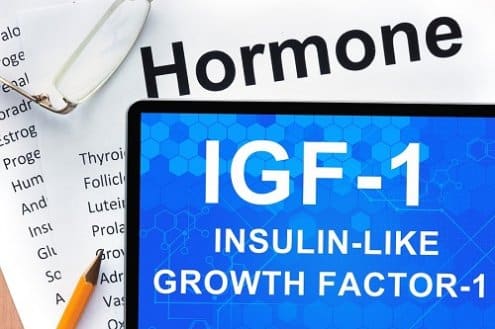What is insulin-like growth factor?
Insulin-like growth factor (IGF), which was previously called somatomedin, refers to a natural hormone produced in the body. This hormone is mostly produced in the liver and works similarly to insulin. Insulin is a hormone produced by a gland known as the pancreas and helps to regulate the level of blood sugar after eating. Somatomedin helps to regulate secretion of the growth hormone in the pituitary gland. Insulin-like growth factor works together with growth hormones to encourage development and growth of tissues and bones. IGF also plays a role in how the body metabolizes glucose. Usually, when you eat, the level of blood glucose rises. Insulin and somatomedin can work together to lower blood glucose levels.
What is diabetes?
Diabetes refers to a metabolic disorder that occurs when the body does not make enough insulin or it cannot properly use the insulin it produces. Insulin is a hormone that helps glucose to enter the muscle cells for energy. Without insulin, the body’s tissue cannot absorb glucose from the bloodstream. This leads to high levels of blood glucose that can lead to long-term health complications if left untreated. The 2 most common types of diabetes are type 1 and type 2 diabetes. Type 2 diabetes accounts for 90% of all cases of diabetes. Patients with type 1 diabetes require insulin therapy because they cannot naturally produce insulin. On the other hand, type 2 diabetes can be treated with exercise and diet. If this does not work, your doctor may prescribe oral hypoglycemic medications like metformin in combination with diet and exercise.
Insulin-like growth factor and diabetes
Even though diabetes is known to be a heterogeneous medical condition, research shows that IGF-1 can reduce insulin requirements and improve glucose levels in both type 1 and type 2 diabetes. A study that was conducted in 2010 showed that lower insulin-like growth factor levels was linked to diabetes. This study took into account people below the age of 65 who didn’t suffer from cardiovascular disease. The researchers in the study could not find a link between IGF and diabetes in people above 65. Low IGF levels may be associated with increased growth hormone secretion in type 1 diabetic people. In type 1 diabetes, IGF-1 acts as replacement therapy, which is to top up low levels of insulin-like growth factor. Evidence shows that this can help to reduce growth hormone (GH) secretion, thus improving glycemic control and insulin sensitivity.
People with diabetes have 2 to 3 times more GH concentrations than people without diabetes. In case of abnormal levels of GH and IGF, it may lead to diabetes complications. It is not yet known what the effect of IGF-1 treatment on insulin-like growth factor is, but with the normal restoration of GH and IGF levels may in turn impact glucose metabolism. There are studies which show a link between the risk of cancer, obesity, and type 2 diabetes with increased levels of insulin-like growth factor and insulin resistance.
IGF tests
A blood test is used to measure the amount of IGF-1 in the body. This blood test is usually conducted if a doctor suspects a child isn’t growing as expected for their age group or if the doctor suspects a pituitary gland or tumor in adults. This test is not usually conducted in patients with diabetes. You are said to have normal IGF levels if your readings are between:
- 182 to 780 nanograms per milliliter for people between 16 to 24 years of age;
- 114 to 492 nanograms per milliliter for people between 25 to 39 years of age;
- 90 to 360 nanograms per milliliter for people between 40 to 54 years of age;
- 71 to 290 nanograms per milliliter for people above 55 years of age.
If your IGF level is outside the normal range, then it could mean you are at risk of having liver disease, hypothyroidism, or your diabetes is not properly controlled.
—
Disclaimer: Please note that the contents of this community article are strictly for informational purposes and should not be considered as medical advice. This article, and other community articles, are not written or reviewed for medical validity by Canadian Insulin or its staff. All views and opinions expressed by the contributing authors are not endorsed by Canadian Insulin. Always consult a medical professional for medical advice, diagnosis, and treatment.





